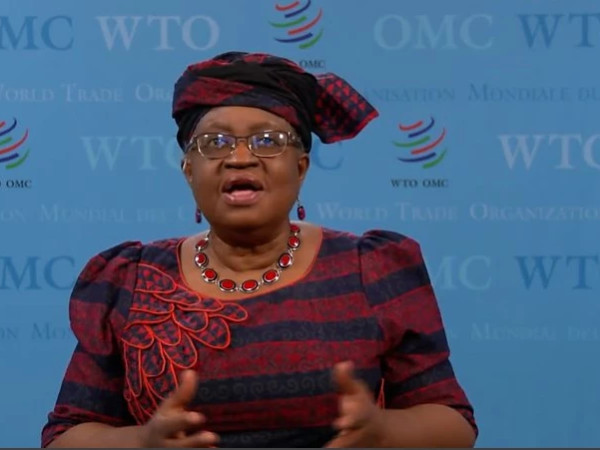Over 2.5 million Israelis currently live in poverty, among them more than 1.1 million children, and 932,000 households live in a state of economic distress, a new survey released this week revealed. Of these 932,000 households (31.6% of all households in Israel), 233,000 were added in 2021 alone, as families grappled with the worst economic effects of the ongoing pandemic.
According to the latest report by the Israeli aid organization Latet, the portion of households in the at-risk category — defined as just above the poverty line but facing deep hardship — reached 23.6% in 2021, up from 14% at the onset of the global health crisis. The report said these households belong to the “poor middle class,” The Times of Israel reports.
The report showed that 651,900 Israeli households (22.1%) lack essentials like housing, education, healthcare, and food, and are thus considered living in poverty. While the percentage is lower than in 2020, when Latet found that 29.3% of households were in a state of poverty, the numbers “remain high,” the organization said Tuesday when it unveiled its annual study.
The report also noted that, over the course of the pandemic in 2020 and 2021, households considered middle class shrank to 48.3% from 58.3% prior to the crisis.
Latet works to combat poverty and food insecurity and supports 80,000 needy families annually via a network of charities. Its report estimated that around 630,000 households suffer from food insecurity, including some 300,000 experiencing it to a severe extent. These households include close to 800,000 children under 18 years of age.
Food insecurity has been defined as the inability to ensure a constant supply of food that contains all the nutritional elements necessary for proper development and health. While it can lead to malnutrition, it is not the same thing. Indeed, it is a prime cause of obesity and is closely linked to disease and increased vulnerability to illnesses.
According to Latet, 77% of assistance-seeking households surveyed in the study reported no longer having enough money to buy sufficient food, with over half of households with infants or toddlers at home testifying that they had to sometimes forgo buying baby formula. Their children either had to miss feedings or make do with portions lower than the amounts recommended by health professionals. With older children, 45% of households said the kids also had to miss meals or eat less per meal.
These families were spending an average of NIS 8,405 ($2,664) a month on all of their needs, while their income totaled just NIS 5,117 ($1,622). Close to 65% of them said their debt had grown as a result of the crisis, compared with just over 25% of the general population.
Israel’s national poverty report is based on income alone, but Latet’s Alternative Poverty Report measures poverty according to households lacking in essential needs such as housing, education, healthcare, food security, and the ability to cover the cost of living (electricity, water, and other bills).
Latet’s food insecurity figures are higher than those estimated by the National Insurance Institute, which recorded about 513,000 households experiencing food insecurity, with 252,000 under severe strain.
The National Insurance Institute last surveyed food insecurity in 2016 and published its most recent poverty report in 2019, based on data for 2018. It is understood to be collecting new food security data with a view to publishing an updated report.
As The Times of Israel previously reported, charities shoulder most of the burden for food insecurity in Israel, with a lack of government funding leaving social welfare agencies largely helpless to respond. Welfare Minister Meir Cohen recently led an initiative to include NIS 100 million (about $31 million) in the national budget for food security, a first for Israel.
Eran Weintraub, CEO of Latet, said in the report that “the serious consequences of the economic crisis are reflected in the formation of a new ‘poor middle class.’ A quarter of the population, affected by the economic crisis, failed to recover and reached the poverty line and were in real danger of falling below it.”
“The ongoing erosion of the middle class and the fact that hundreds of thousands of families are at risk of falling into poverty threatens the resilience of Israeli society and economy,” said Weintraub.
The report, which surveyed respondents from among the 80,000 people who receive assistance from Latet, found over 80% reported serious economic harm resulting from the pandemic. Ten percent of respondents said they had no permanent housing, and another 22.9% said they were at risk of losing their housing due to their inability to pay rent.
Close to 70% said they had to skip buying medication or seeking medical help because of their inability to pay.
Three-quarters (75%) of households said they did not have enough computers at home for their children to study online, and/or were unable to buy the needed school supplies like books and notebooks.
Three measures of poverty
Latet’s research uses three measures to assess economic distress: income, where poverty is officially defined as having a net income below 50% of the disposable median income (currently set at a monthly NIS 6,000 — $1,837); subjective evaluations by low-income families; and inability to buy basic necessities in at least three of several categories such as food, medications and children’s school supplies.
Respondents scoring negatively on one of the three measures were defined as being in economic distress. Those meeting two conditions were labeled poor.
The percentage of families that are poor and doing without basic food items has almost tripled under the weight of the crisis, it said.
The ERI research and consultancy firm conducted the study on economic hardship for Latet, questioning 560 people receiving Latet assistance aged 18 and over in August 2021, with a maximum sampling error of 4.5%.
Also as part of the Latet report, for a deeper view of food insecurity, the marketing research company Rotemar analyzed separate sets of data gathered earlier in the year from interviews with 1,357 food bank recipients, 112 non-profit organization directors and 502 representative members of the public.
'A worrying picture’
The findings of the Latet report were presented this week to the Knesset’s Labor and Welfare Committee, chaired by MK Efrat Rayten Marom of the Labor party.
Marom said that the figures “reflect a sad and worrying picture that should make us all lose sleep,” and that the disregard for those living in poverty or at risk of falling into it has been ongoing for years. She called for ministerial cooperation to understand “the depth of the problem and [help us] see the human beings, the citizens for whom we work and to whom we are committed.”
Transportation Minister Merav Michaeli said the report “shows the severe economic harm caused by the coronavirus. It is an existential danger for the State of Israel when there is such a large group of people in distress; it’s not charity, it is responsibility.”















